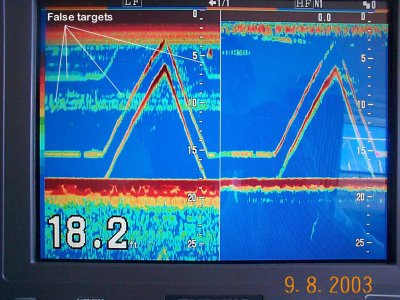Good afternoon Teffy,
Thank you for the follow-up. I had a chance to review the video, great discussion with some very knowledgeable fishermen. I am familiar with Duane and also Ali on the west coast. After watching the video concerning the sounder settings it proves that each and every day is going to be different on your vessel when compared with what others are doing. What works for one fishermen's day of fishing may not work for another. Sometimes what works on your own vessel one day may not work months later. Time and time again, we get questions about settings, what settings should I use? What are the best settings for my fishery? This is a very difficult question to answer because it is hard to know what the local conditions are at the time in your fishery without being out there. There are also many different ways to tweak your sounder to get the performance that is desired for your eye. Again that is a very subjective comment because what I like to look at on the screen may be very different from what you would prefer to see. That does not make it right or wrong, it is just personal preference between the users. I personally like to run my fish finders very hot. I like to see everything, I let my eyes and brain filter out the clutter to see the targets. Others prefer a clean screen with only the big red fish marks or bait marks. Again that does not make any one method right or wrong, it is just personal preference.
I believe the important point to consider and understand is learning what the different settings do on the fish finder and how does each setting, change the way the picture looks on the fish finder. Another important concept that I gained from the video, don't be afraid to experiment with settings, make changes, one setting at a time and see how the picture changes on the display. Doing this you will get a better understanding of what each and every setting does and how it affects the presentation. Once you understand the adjustments and what they do, you will have no trouble optimizing the presentation that is right for your eye each and every day.
The comment about Ping Rate that Ali mentions is a difficult one to answer because I have never fished on his boat and I don't know what his fish finder presentation's preference is. I can explain what I have learned about ping rate and reasons to reduce it. Normally, as I mentioned in the previous post, we teach operators to use a fast ping rate, the faster the ping rate the more pings you get on your target and the more information you see. So what are a couple of reasons to reduce the ping rate? One example is if you notice a false echoes, the example below shows some false echoes on the screen in between the actual target and the surface, and how do we know it is a false echo and not a layer? By adjusting the ping rate, if echo disappears or the echo shifts up or down it is a false return, a false bottom also mimics the depth profile of what the bottom actually is. So if you see something like this on your screen, you can adjust the ping rate to see if it disappears or moves up or down, if it does then it is a false return, if it stays then you know it is a layer or echo of some sort. Another way to adjust ping rate, mentioned in the previous post, is to simple increase the depth that sounder is looking at. By manually increasing the depth of the sounder, you are also slowing down the ping rate because the deeper you tell the sounder to look the longer it has to wait for a return from a ping.

Again, I am not here to judge or contradict what Ali is saying. When he is out sword fishing, on his vessel, slowing the ping rate down for him, works for his style, his eye, and the presentation that he is looking for. It also may clear up his screen, maybe reduce interference, it is really hard to say, I have not been out with him on his vessel and observed the fish finder returns. I don know that he puts in a lot of time, has time on the water, looking and observing, so I can't discount his observations and expertise.
For me though the big take away, don't be afraid to test, try different settings, write them down, come up with a key that allows you to give settings a thumbs up or thumbs down. The more you experiment with the equipment, the subtle nuances will become easier to see, the more you do it, the better you will get. Until, you know exactly what setting you need to adjust to make the fish finder shine for your eye and presentation style. That I think is the ultimate goal.
What I do know, there is no one way to do things. If you have settings that you are happy with, that show you fish, that gives you confidence, and you are happy with what you are seeing, then those settings, the presentation, etc. is right for you and it is not for me to judge and say, "no, you are doing wrong" "this is how it should look."
Another reason to slow the transmit rate down is to reduce interference either from another sounder on the vessel or the area.
C-Bass.



